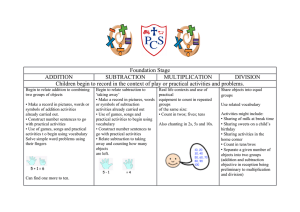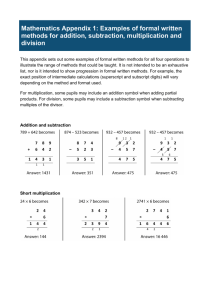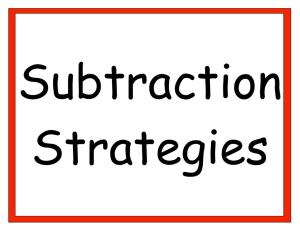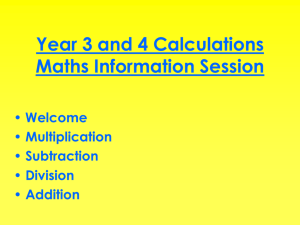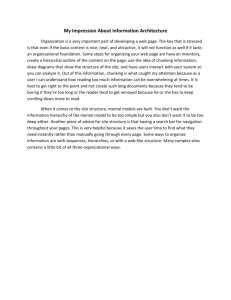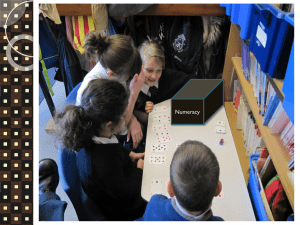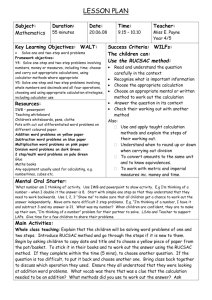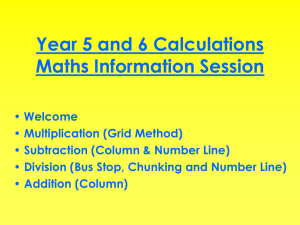How your child learns to calculate
advertisement
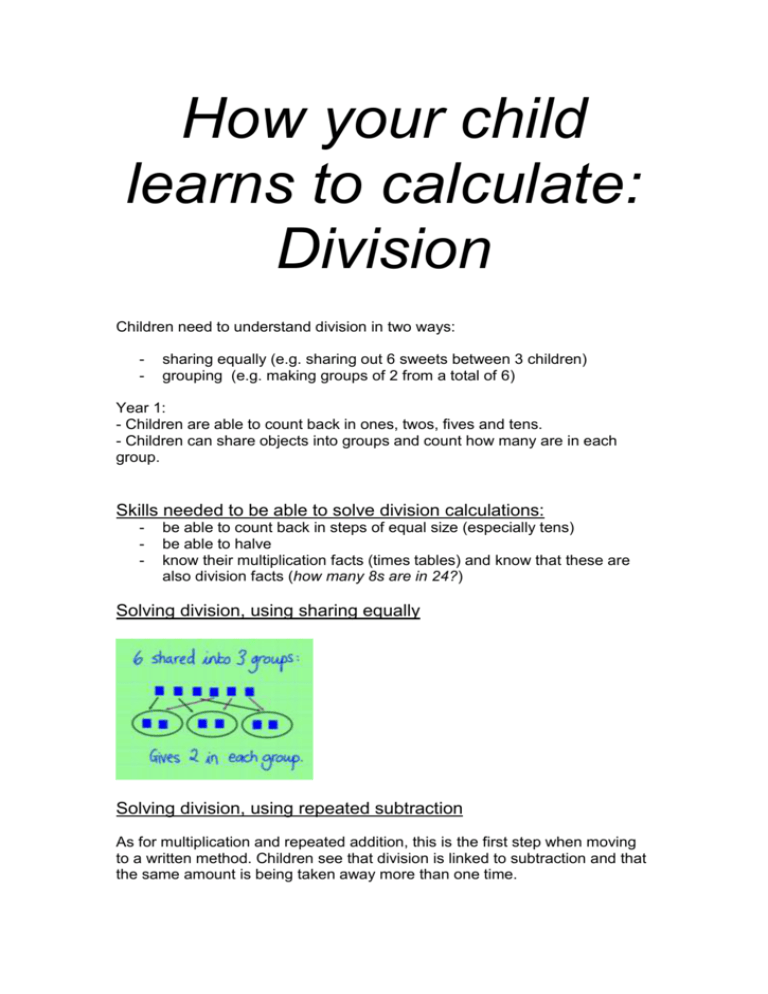
How your child learns to calculate: Division Children need to understand division in two ways: - sharing equally (e.g. sharing out 6 sweets between 3 children) grouping (e.g. making groups of 2 from a total of 6) Year 1: - Children are able to count back in ones, twos, fives and tens. - Children can share objects into groups and count how many are in each group. Skills needed to be able to solve division calculations: - be able to count back in steps of equal size (especially tens) be able to halve know their multiplication facts (times tables) and know that these are also division facts (how many 8s are in 24?) Solving division, using sharing equally Solving division, using repeated subtraction As for multiplication and repeated addition, this is the first step when moving to a written method. Children see that division is linked to subtraction and that the same amount is being taken away more than one time. Children use a number line and starting with the total, repeat taking away the divisor (the number which is divided into the total) until they have nothing left: The answer is in the number of jumps needed (so in this diagram it is 4). Solving division, using chunking on a number line When moving on to larger numbers, children use key facts from their times tables to support their working. This allows them to become more efficient with repeated subtraction by chunking groups together: Starting with 98, 10 groups of 7 have been chunked together all at once and counted back, leaving 28 on the number line. This speeds up the process of solving division. Children are ready for this method when they have secure times table knowledge and counting back skills. The answer is in how many groups of 7 have been made, which in this diagram is 14. The number line method can also be used to solve problems with remainders, and with bigger numbers. Solving division, using chunking with a written method When children are ready to move away from the number line, they use a written vertical method: It works exactly the same as the number line: Key facts are recorded and then chunks of the divisor are taken away at the same time. The notes in the brackets are important because they explain how many groups have been taken away. This is where the final answer will be found. In this question, we can see that 18 groups of 13 were taken away until there was nothing left. The ability to solve subtraction mentally, and times table knowledge are necessary to be able to use this method. Becoming more efficient Here, with good times table knowledge, 30 groups of 6 are taken away altogether. If children know that 3 x 6 is 18, they can know that 30 x 6 is 180 and so become more efficient with their working out. When 4 is left, no more groups of 6 can be taken away, so this is the remainder. Important note: All children are different and should be allowed to choose the method that they feel most comfortable and confident with. Some children will always find the number line method the best way of working out calculations. This method will work for any size of numbers and with problems with remainders in the answer, so does not stop them from progressing in their maths work.

